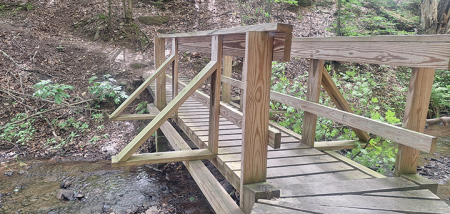Health Topic Of The Month: Ticks And Lyme Disease
Published:
May 4th, 2023
CHENANGO COUNTY — Lyme disease is a bacterial infection humans can contract after being bitten by an infected black-legged tick.
The early symptoms of Lyme disease are often easily missed. Symptoms include fever, chills, headache, fatigue, muscle and joint aches, and swollen lymph nodes. Approximately 70 percent of infected people will develop a rash called Erythema Migrans. The rash begins at the site of the tick bite, appears between three to 30 days following the bite, and often looks like a “bulls-eye” pattern or a solid red patch.
Lyme disease can cause several health problems if it is not diagnosed and treated properly. See your health care provider if you think you may have Lyme disease. Diagnosis can be made based on symptoms and history of possible tick exposure. Early treatment with antibiotics will almost always result in a full cure.
If you do find a tick attached to your skin, do not panic. Not all ticks are infected and your risk of Lyme disease is greatly reduced if the tick is removed within the first 36 hours.
To remove the tick: Use a pair of pointed tweezers to grasp the tick by the head or mouth parts right where they enter the skin. Do not grasp the tick by the body. Pull firmly and steadily outward. Do not jerk or twist the tick.
Place the tick in a small container of rubbing alcohol to kill it. Clean the bite wound with rubbing alcohol or hydrogen peroxide afterward. Monitor the site of the bite for the next 30 days for the appearance of a rash.
There are steps you can take to protect yourself against Lyme disease. Wear light colored clothing to make it easier to spot ticks. Wear enclosed shoes, long sleeved shirts, and long pants. Tuck pant legs in to socks or boots and tuck shirt into pants. Try to avoid wooded or brushy areas. If possible, walk in the center of trails.
After being outdoors, be sure to check your clothing, bag and pets for ticks and shower as soon as possible. Do a body check on yourself and your children. Be sure to check under arms, in/around the ears, belly button, back of the knees, in/around hair, between legs, around the waist, and in skin folds.
Take steps to keep ticks out of your own backyard. Keep your lawn mowed and edges trimmed. Clear any brush, leaves and tall grass from your house and yard. Move wood piles away from your house and off the ground if possible. Keep the area under bird feeders clean, small animals attracted to such areas may carry ticks into your yard.
Locate children’s swing sets and play equipment in dry, sunny areas of the yard, away from edges with tall grass and/or woods where ticks are abundant. Don’t forget, every autumn, clear fallen leaves and garden litter out of your yard. This removes areas where ticks live in the winter.
If you have any further questions about Lyme disease or ticks, contact your healthcare provider or the Public Health Department at 607-337-1660 for more information.
For more information online go to www.health.ny.gov/diseases/communicable/lyme.
-Information provided by Chenango County Public Health Department
Comments











